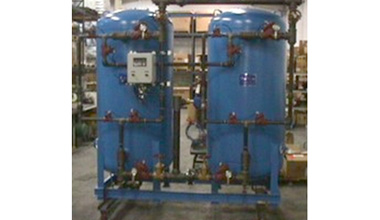Alkalinity in water is present in four different forms - Dissolved carbon dioxide (CO2), Bicarbonate (HCO3), Carbonate (CO3) and Hydroxyl (OH).
When raw water has high alkalinity, even after softening, causes foaming and carryover of solids that leads to embattlement of boiler steel. The decomposition of bicarbonates due to heat produces CO2, which causes corrosion.
Alkalinity needs to be removed and monitored to prevent scale and corrosion to minimize total operating costs.
Following Ion exchange processes can be used for reducing alkalinity. |

